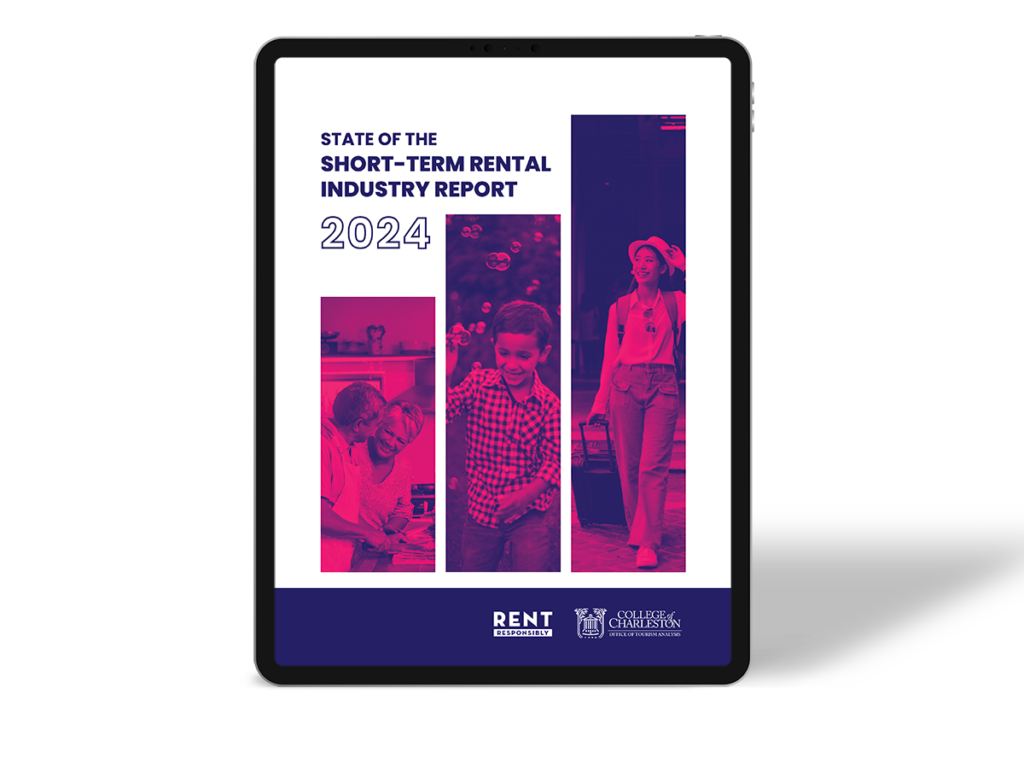Updated on September 21, 2024
In recent years, conversations about short-term rental regulations have become inextricably intertwined with affordable and workforce housing issues.
Four in five elected officials/government staff (82.7%) indicated that affordable housing was an issue in their jurisdiction, according to the 2024 State of the Short-Term Rental Industry Report.
Banning or limiting STRs is often proposed as a solution to housing shortages and unaffordability. Still, multiple studies have indicated such restrictions do not offer the easy solution elected officials are after.
Take one of today’s most-watched cases: New York City. The Big Apple’s de-facto ban on STRs is getting its year one report card this month, and housing needs are just as dire as they were pre-ban (but hotels and nearby New Jersey have gotten a nice bump.)

One of the biggest issues with pinning housing issues on STRs is that it can delay finding effective solutions to the complicated multiple factors that drive housing prices and availability, exacerbating a problem we all want to solve.
Data can help untangle these complex supply equations. Here, we’ll explore some major studies on STRs and housing that offer helpful starting points. We’ll also learn how to get critical local data and hear from government officials about what has worked in several jurisdictions that have deployed successful strategies.
Studies on the housing crisis and Airbnb
The most recent studies found that STRs’ effect on housing shortages and prices was generally modest – varying according to location and local factors – and overshadowed by broader structural constraints on housing.
Structural constraints are ongoing, systematic factors resulting in imbalances between housing supply and demand, leading to higher prices and shortages, including:
- Restrictive zoning that prohibits multifamily housing
- Limits on the number of housing units per acre
- Maximum building heights
- Minimum lot sizes
- Lengthy and restrictive permit approval processes
- Land scarcity in urban areas
- Geographic barriers such as mountains, waterways, and protected land
- Inadequate infrastructure or access to public services
- High labor and material costs
- High property taxes, impact fees, and other fees
Key takeaways from housing studies and short-term rentals
According to a literature survey by AirDNA, studies on the relationship between STRs and the housing crisis started in 2016.
National housing studies
- Oxford Economics (2019) examined the impact of STR growth on housing prices across the United States and found that STRs accounted for only 1% of home price appreciation from 2015 to 2018. The study identified other factors, such as income growth and unemployment rates, as having more influence on housing prices. The authors concluded that structural factors limiting housing supply, which were in effect for decades before the rise of STRs, were more significant drivers of prices.
- Barron, Kung, and Proserpio (2021), in a study of the United States, found that STRs resulted in an annual increase of $9 in monthly rent and $1,800 in house prices for the median ZIP code in their national data set. They estimated that STRs account for one-fifth of actual rent growth and one-seventh of actual price growth, while the rest is due to structural factors.
- The Guardian Data Blog (2022), in a study of the acceleration of housing prices in Australia during the COVID-19 pandemic, found STR density did not correlate with the rapid increase in housing prices. Instead, it identified factors such as migration patterns from remote work and a construction slowdown during the pandemic as more significant drivers of housing price growth.
- Oxford Economics and Vacation Rental Management Association (2023) examined the impact of short-term rentals in the U.S. They found that short-term rentals contributed just a tiny fraction (0.4%) of the 32.7% increase in housing prices.
Local housing studies
- Sheppard and Udell (2016), in an analysis of New York City, one of the earliest and largest STR markets, found that doubling STR listings could drive home value appreciation by 6% to 11%. However, they argued that additional revenue streams and economic activity from STRs outweighed drawbacks and that STR regulations would not effectively address housing unaffordability.
- Horn and Merante (2017), in a case study of Boston, found that a one-standard-deviation increase in Airbnb listings relative to the total number of housing units in a census tract was associated with an increase in asking rents of 0.4% city-wide, which accounted for only 8% of the city’s 5% year-over-year rent increases.
- Ayouba et al. (2020), in an analysis of 15 French cities, found that STRs had a limited impact on rents and that their effects were most pronounced in Paris. The study noted that national housing policies, local economic conditions, and high concentrations of high-value second-home markets had a more substantial impact on housing prices. They suggested that elected officials tailor regulations to local market conditions.
- Garcia-Lopez et al. (2020), in a study of Barcelona, identified a 1.9% increase in rents and a 3.9% increase in home prices due to STRs, with impacts more significant in high-tourist areas.
- Valentin (2020) assessed the effect of an STR ban in New Orleans and found that housing prices dropped by 30% in regulated areas bordering the popular French Quarter. However, the regulations only displaced STR activity to other areas rather than reducing overall prevalence. The research concluded that bans could reduce housing prices in tourist hot spots and densely populated areas but would not result in lower rents.
- Koster, Ommeren, and Volkhausen (2021) compared regulated and unregulated STR markets in Los Angeles County. Regulations reduced STR listings and coincided with a 3.6% reduction in home values and rents. The effect was more impactful in tourist hot spots.
- HR&A (2022) analyzed the impact of STRs in five Colorado mountain counties and found that a lack of infrastructure for local workforce housing and other factors, rather than STRs, contributed to housing pressures in these communities. The study found that home construction had not kept pace with job growth.
The one thing all of these studies show: While STRs’ effect on housing is more pronounced in tourism hot spots within destinations, factors other than STRs are responsible for the lion’s share of driving up prices and reducing housing availability across communities.
Government officials themselves back this up. In the 2024 State of the STR Industry study, they cited the top three negative impacts on their affordable housing supply as: the cost of building new housing, real estate values, and lack of space to build new housing.

Housing affordability solutions that work
Among various solutions government officials have tried to alleviate affordable housing shortages, they ranked the following three strategies as most effective:
- Opening new space to build new housing (55.3%)
- Supplementing the cost of, or otherwise incentivizing, the construction of new housing (50.5%)
- Creating more conducive zoning policies (45.6%)
Housing data elected officials need and where to find it
Regardless of how many studies exist, individual communities won’t find the information needed to make effective decisions because STRs’ effect depends on the local context.
Stakeholders need a clear understanding of their housing stock and STRs’ contribution to the local economy to make informed decisions on STRs and housing policy.
Yet, according to the 2024 State of STR Industry Report, only 18% of elected officials felt they had enough information to inform their STR policy decisions.
The bright spot: This information is easy to find. Here is the data that elected officials need, why they need it, and where to find it:
- The total number of housing units in the jurisdiction. Knowing the total number of housing units to determine what percentage is STRs and what percentage is another category. This information is available from the U.S. Census Bureau data search tool. Search “[location] housing supply.”
- Vacancy rate. This figure shows how much of a jurisdiction’s existing supply is sitting unused, a helpful number for comparison and identifying viable solutions. This number will be available in the Census data search above.
- Total number and percentage of STRs. With this number, you can calculate what percentage of the total housing inventory makes up STRs. Information on the total number of STR units in a market is available on AirDNA and Key Data. (Divide the number of STRs by the total housing inventory and multiply by 100 to determine the percentage of housing inventory used as STRs.)
- Number of seasonal, recreational, or occasional use (SRO) housing units. This information is available from the U.S. Census Bureau data search tool. It indicates second homes and vacation homes that would be unlikely to join the long-term rental market or that would be unaffordable on the long-term market if STRs were limited or banned. Historical data can corroborate whether such properties existed before the rise of Airbnb.
By taking a data-backed and local lens on short-term rentals and housing, communities can more effectively craft fair STR regulations and solve affordable housing challenges for all.
…


